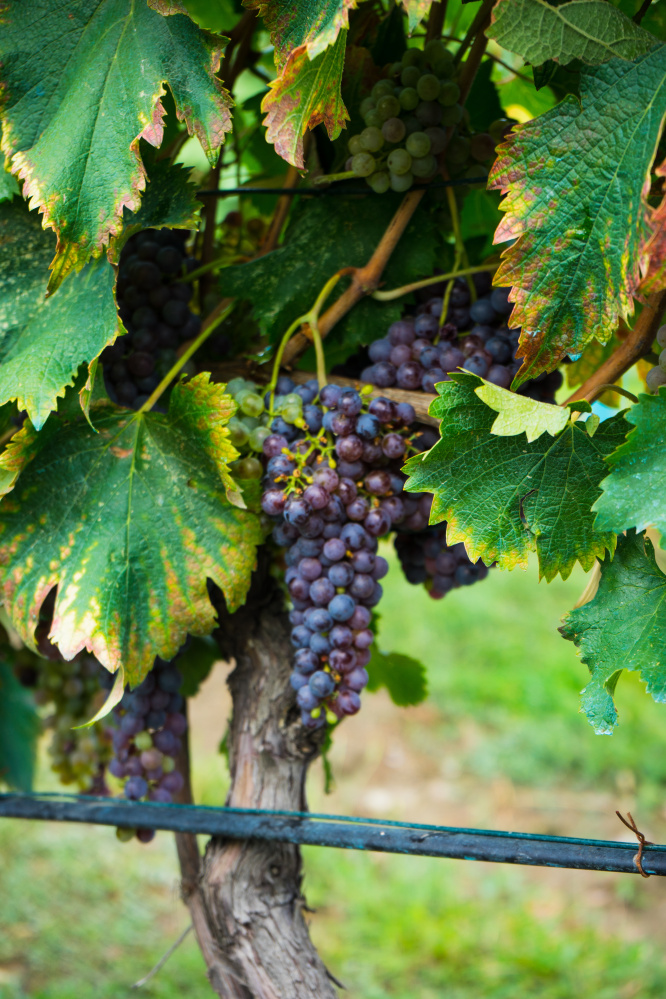It’s no surprise Georgia produces good wines – it’s been at it a really long time.
I’m always on the lookout for new wines. As someone who has the luxury of regularly trying many different kinds of wines, I get tired of tasting the same old things.
If I’m presented with a wine lineup that features multiple bottles of the same grape, each with slightly different particularities of place or oak use or sun exposure, it’s almost a forgone conclusion that I will lose interest quickly. Like after-the-first-sip quickly. There’s only so much micro-nuance a guy can take.
Conversely, when distributors pull something new out of their mobile wine bags, I get a tad giddy. This happened to me a few weeks back.
Brendan Robb, National Distributors wine sales manager, and Sophia Pecora, my National Distributors wine saleswoman, showed up one afternoon with a half-dozen bottles of Eastern European wines – from Slovenia, Hungary and Georgia. Brendan is a smart cat, and he has good taste, to boot. He walked me through each winery’s story, and we tasted and shot the breeze for a half-hour or so. There would be too much to write if I highlighted the talking points of all of these wines, so I’m going to light upon one of the wineries and suggest that you grab a bottle wherever you can.
Georgia, formerly part of the Soviet Union, has been making wines for 8,000 years. It’s likely that it was the birthplace of viticulture. Just to give a little context, 10,000 to 8,000 years ago was at the end of the last ice age and was the beginning of human civilization as we know it. Agriculture was in its infancy, with Mesopotamia embarking on barley and wheat cultivation, but most humans were still hunting and gathering for their subsistence.
Somewhere in that time period, right after the post-glacial waters had receded enough to reveal large land masses, someone discovered that smashing grapes and burying them just below the surface of the earth in earthenware pots resulted in alcoholic grape juice. That’s how long ago the Georgians were making wine. Anything with such an ancient pedigree is worth paying attention to.
Fast-forward to two weeks ago when I’m tasting wines that are basically made in the same way they were 8,000 years ago. That’s an incredible unbroken chain of tradition. Even if they were wines fit only for the dumpster, it still would’ve been an interesting experience. In fact, they were ancient, novel and delicious all at the same time, which is not an experience I have all that frequently.
The standouts of the tasting were both produced by the Doqi winery, located in the wine region of Kakheti. One was an amber, or orange, wine made from Georgia’s most important white grape, rkatsiteli, and the other was a red wine made from Georgia’s most important red grape, saperavi. Both are vinified in the traditional Georgian quervi, large earthenware pots that are buried underground to stabilize the fermenting temperature throughout the winter months.
The Rkatsiteli Quervi was the color of lightly steeped tea, the result of extended skin contact. When red grapes are crushed and the skins are left in contact with the fermenting juice, they turn red – most of you know this. When white grapes are crushed and the skins are left in contact with the fermenting juice, a practice that’s infrequent, the wine turns amber. It smelled of spice and honey and yellow raisins. I know that sounds dessert-like, but it’s not. Imagine honey without the sweetness if you can. And, because of the long skin contact, the finished wine picks up some tannins, which is unusual for a white wine. Different and fantastic are my descriptors. You can get this wine at Maine & Loire on Washington Avenue in Portland.
The Saperavi Quervi was an opaque red. The aromas were all dark red and black fruits: blackberries, dark cherries and some currants. The wine’s spiciness wasn’t the result of barrel aging, since it didn’t see any wood. It’s hard to convey the wine’s rusticity: I don’t mean that it was poorly put together or unhygienic. It was rustic in the sense that it hadn’t been overly edited or cosmetically doctored. Purposefully rustic might be a good way to put it. It’s packed with firm tannins, so I wouldn’t drink it on its own. Add some food, preferably fatty food. Your mouth will thank you. You can grab this bottle at Rosemont Market on Brighton Avenue in Portland.
If, occasionally, you need to inject a bit of novelty into the familiar aspects of your life, then these wines will be the perfect infusion. They are ancient and novel at the same time. How often do you get an experience like that?
Bryan Flewelling is the wine director for Big Tree Hospitality, which owns three restaurants in Portland: Hugo’s, Eventide Oyster Co. and The Honey Paw.
Send questions/comments to the editors.



Comments are no longer available on this story